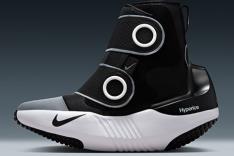Bike Math
Take the cost of the new bike at discount, subtract the cost of your old bike plus the difference between the discount and the full retail price, and divide that by the number of years you'll ride.
Here it is written as an equation:
{Cost of new bike – (estimated worth of old bike + amount saved with discount)} / number of years you'll ride.
Example: Say the bike you want to buy is $2,000. With your "killer discount" you can get it for $1,600. Let's assume you can get $700 for your old bike and that you plan on riding your new bike for 10 years. That's {2000 - (700+400)} / 10. That's only $90 per year for a brand new bike.
For an extra boost, you can factor in the maintenance and parts-replacement costs of continuing to ride your old bike ($100 per year). That's where you save your family money. In this case it's about $10 per year.
Jennifer, being the first to coin the term "bike math"—and the first to call bike math bluff—wasn't buying Christian's pleas, but she is a huge proponent of athletic outlets so she agreed that Christian could buy the new single speed.
More: How to Find Your Perfect Bike
He transferred his old hubs to the new bike, which was one of his arguments for saving money. But soon after is where his bike math started to break down.
The new wheels didn't fit with the old hubs so he had to build new wheels—and get new forks—for the new bike. And in order to sell the old bike, he had to buy new hubs for that one.
Jennifer laughs, "It was saving me money though?is what I'm told."
Buyers beware: Should you decide to use bike math, you might run into trouble, too.
You'll probably spend just as much, if not more, maintaining your new ride; you're not likely going to put old parts on a new bike; and you'll probably end up keeping your old bike because "it's great for commuting or riding in the rain."
But there's no reason to mention those things when you're gunning for new wheels. Bike math is meant to be used at or before the point of purchase. After that, you're on your own.
More: 4 Steps to the Perfect Bike Fit
It turns out Christian also "saved the family money" when he bought a new bike computer.
"I get it," says Jennifer. "It's like when I go to the running store and I want new things. But I have a visor and I have shoes—what more could I need?"
"But it's fine," she adds "because my husband is saving us money."
Whether you're drooling over a new bike, a new set of wheels or are ready to take the plunge on the long-distance race registration, put bike math to the test.
Good luck with your new purchase. And as my high school geometry teacher used to say, "May the math gods be with you."
More: How to Keep Triathlon Costs in Check
 Use bike math to get to your next race.
Use bike math to get to your next race.
- 2
- of
- 2
About the Author









Discuss This Article